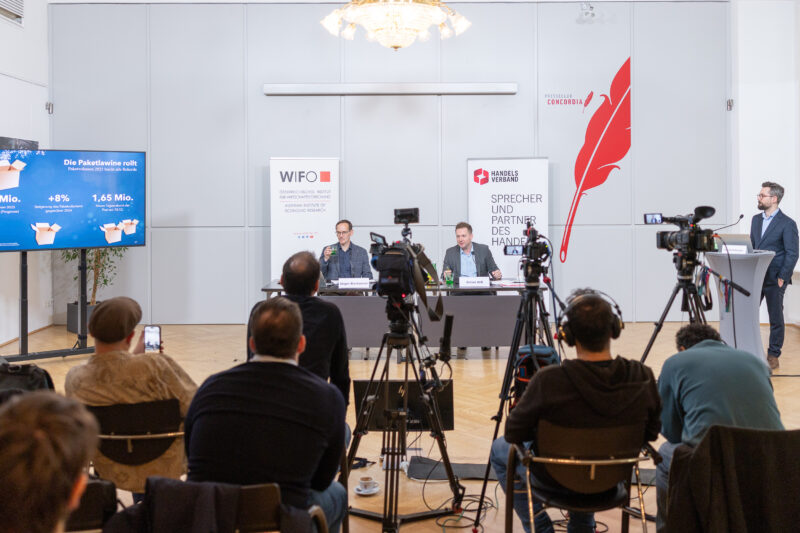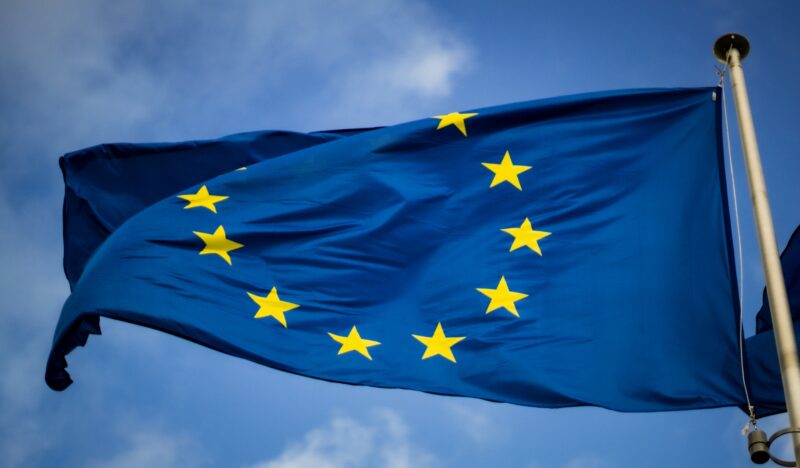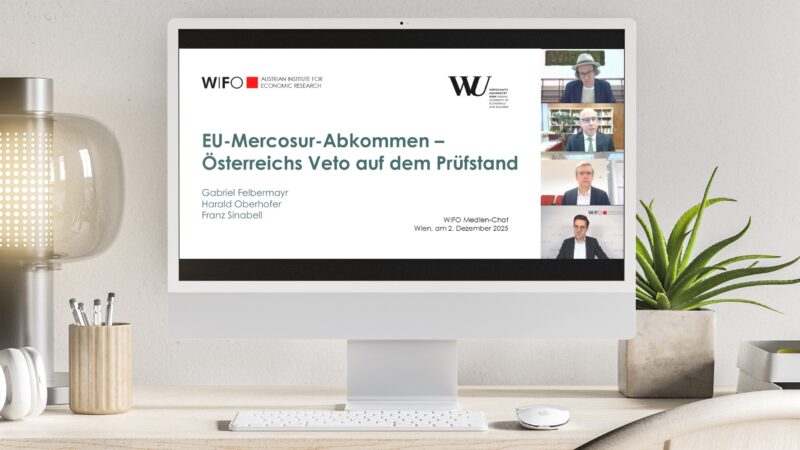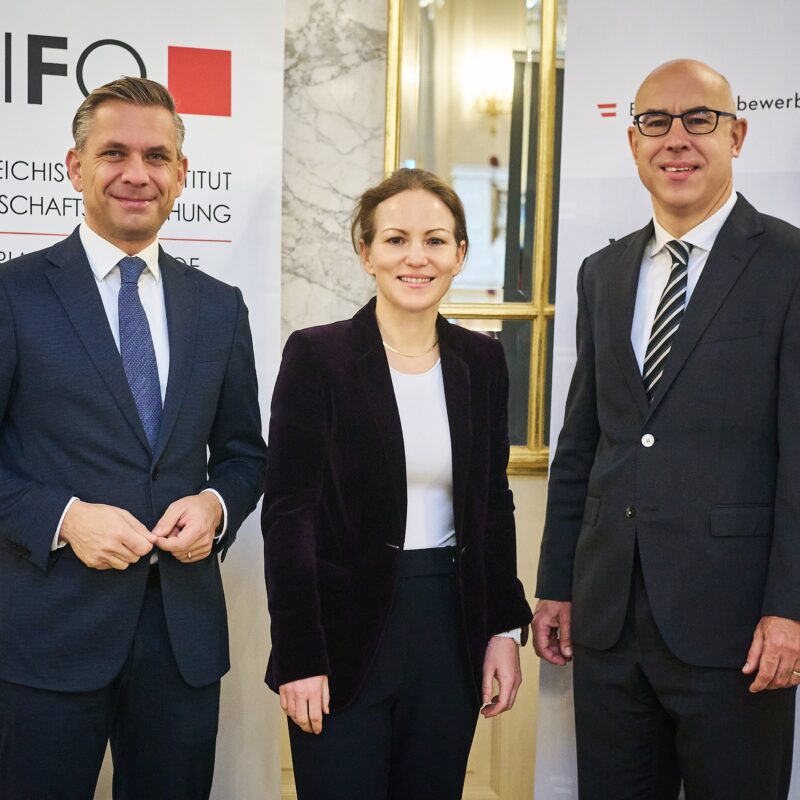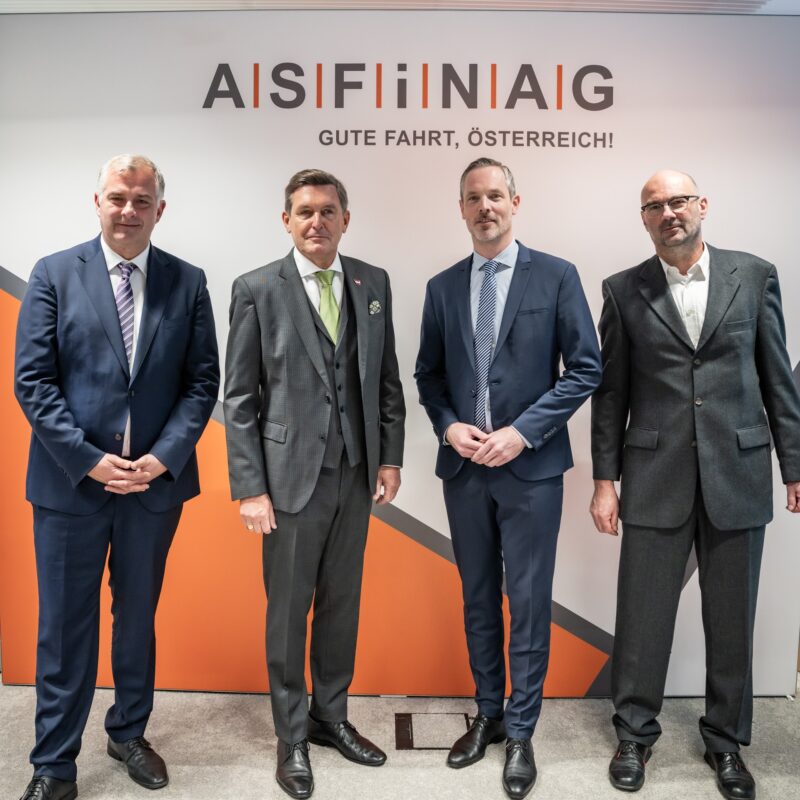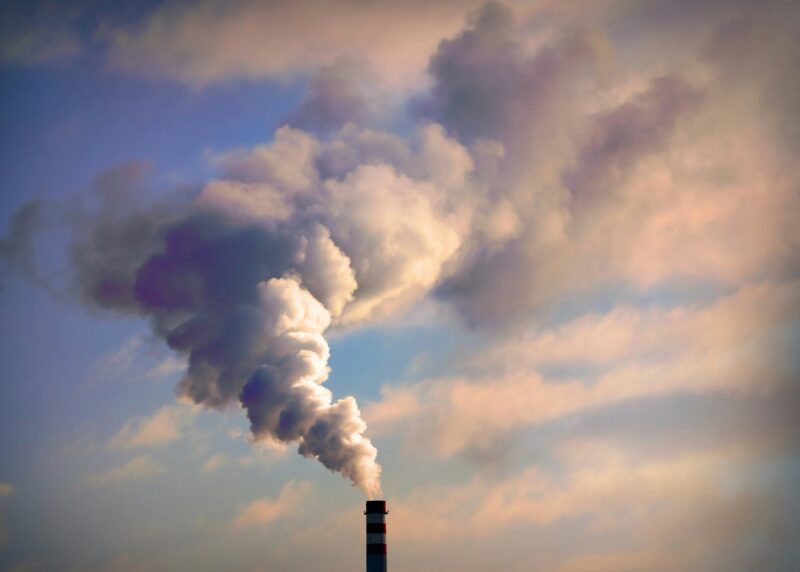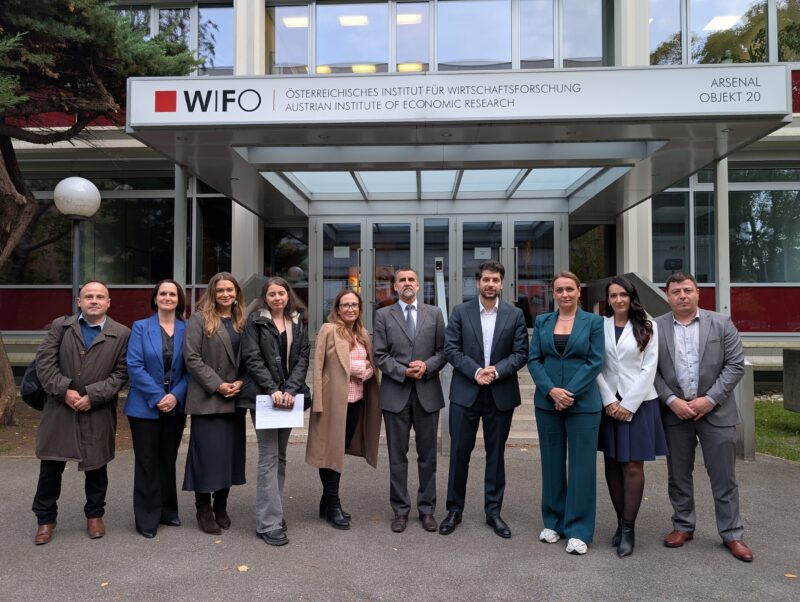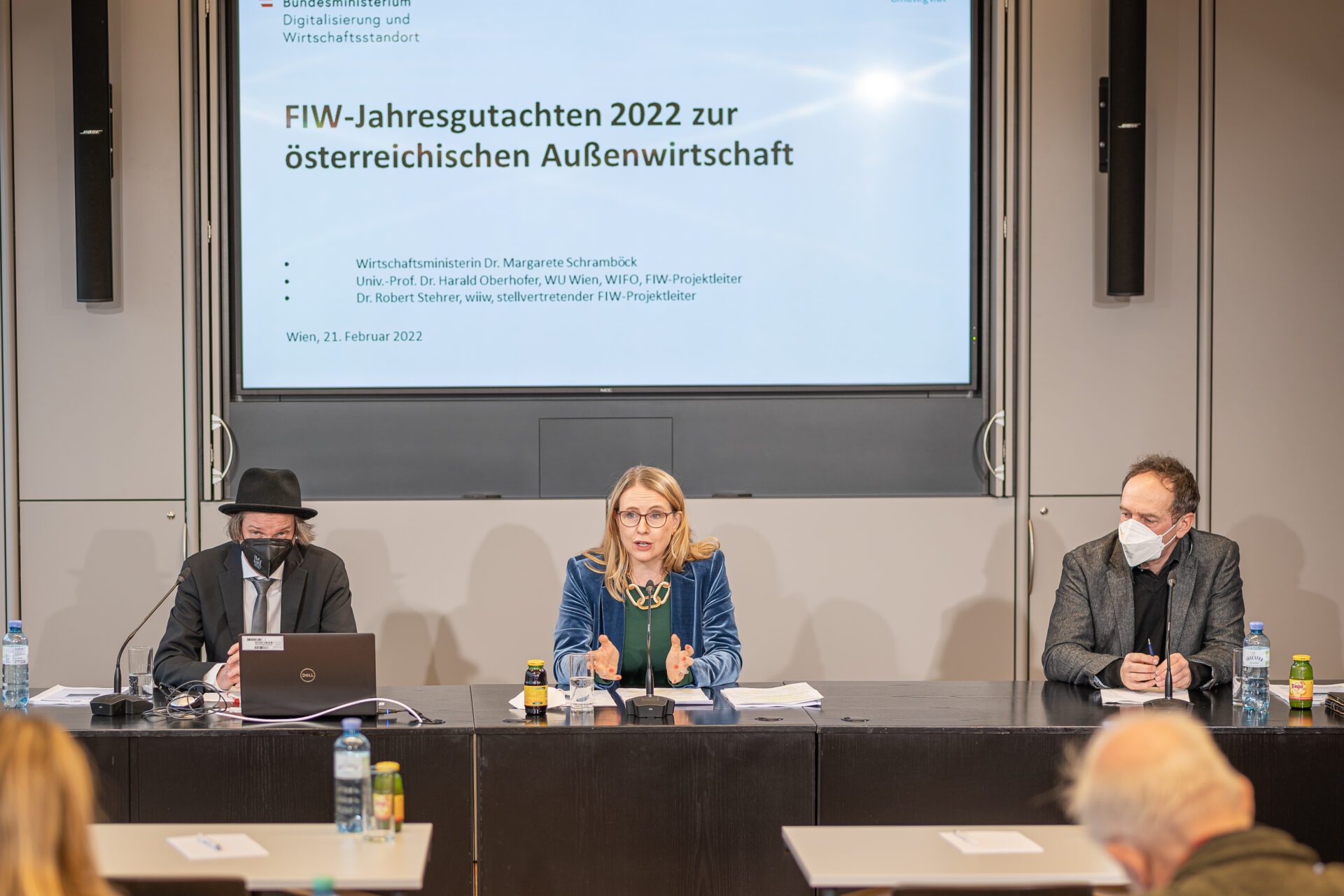
FIW: First Current Account Deficit in 20 Years
According to the FIW Annual Report, the reasons for Austria's first deficit in 20 years are the total loss of winter tourism in 2020-21 as well as a COVID-19 induced worsening of trade conditions, while at the same time the development of Austrian imports is more dynamic.
The FIW Annual Report was presented at a press conference with Federal Minister Margarete Schramböck, Harald Oberhofer (WIFO, WU Vienna, FIW project lead) and Robert Stehrer (wiiw, Deputy FIW project lead).
A video of the presentation is available here.
The annual report is dedicated to the current international environment for Austrian foreign trade relationships and trade developments in 2021. In addition, the study authors present short- and medium-term forecasts for the expected future development of Austrian trade relations.
Based on the forecast for 2022, total Austrian exports of goods and services can be expected to grow by 8.5 percent (price-adjusted). In 2023, the experts at FIW expect export growth of 4.2 percent. While the export development in 2021 was largely driven by goods trade, the forecast for 2022 assumes dynamic development in service exports, which is likely to be driven primarily by tourism. Service exports could grow by 18.1 percent in real terms in 2022 and by a further 5.1 percent in 2023. For service imports, the annual report predicts a 11.4 percent increase for 2022 and a 5.0 percent growth for 2023. Based on these forecasts, the Austrian current account balance will improve and is expected to be positive again in 2022, with a surplus of around 3.5 billion €.
The year 2021 was dominated by different developments that share a common cause with the COVID-19 pandemic. Austria's foreign trade in goods developed dynamically, especially in the first half of 2021, but was increasingly affected by pandemic-related supply bottlenecks and shortages of materials. While Austrian imports of goods were hardly affected by this development and imports of capital goods in particular grew dynamically, Austrian exports suffered more from the supply-side capacity constraints. At the same time, prices for Austrian goods imports rose more sharply than for exports from the spring onward. This deterioration in Austria's terms of trade, together with the other factors, caused a projected trade deficit of 11 billion € in nominal terms (2.7 percent of GDP).
Austrian trade in services in 2021 was affected by COVID-19 restrictions leading to an almost full cancellation of the 2020-21 winter season due to the pandemic. Due to the very weak months at the beginning of the year, travel exports are expected to decline by 24.6 percent year-on-year in 2021. Transportation services and business-related services, which are closely linked to trade in goods, developed more dynamically. Overall, the annual report forecasts a 1.1 percent growth rate for Austrian service exports. Austrian service imports hardly reacted to COVID-19 related restrictions in 2021 and were able to recover dynamically with a growth rate of 7.4 percent. The stronger dynamics in services imports, together with the relatively large trade deficit, lead to a negative current account result of 3.2 billion € (–0.8 percent of GDP).
According to the study's forecasts, the current account balance is expected to turn positive again this year, with a surplus of around 3.5 billion €. In services trade, a strong recovery of exports by 18.1 percent and a growth rate of imports of 11.4 percent are expected to result in a larger surplus in the services balance. The negative trade balance will also narrow somewhat but remain at a high level.
Regarding material shortages and supply chain restrictions for intermediate products, the question of the potential for improving the resilience of European and Austrian value chains arises. This point raises the question of relocating the production of goods that are considered strategically important, such as batteries or semiconductors. In this context, an in-depth analysis of the determinants for the outsourcing of this production seems to be necessary in order to derive an evidence-based economic policy decision.
The FIW Annual Report is available for download here.
The data appendices can be found here.
Please contact



